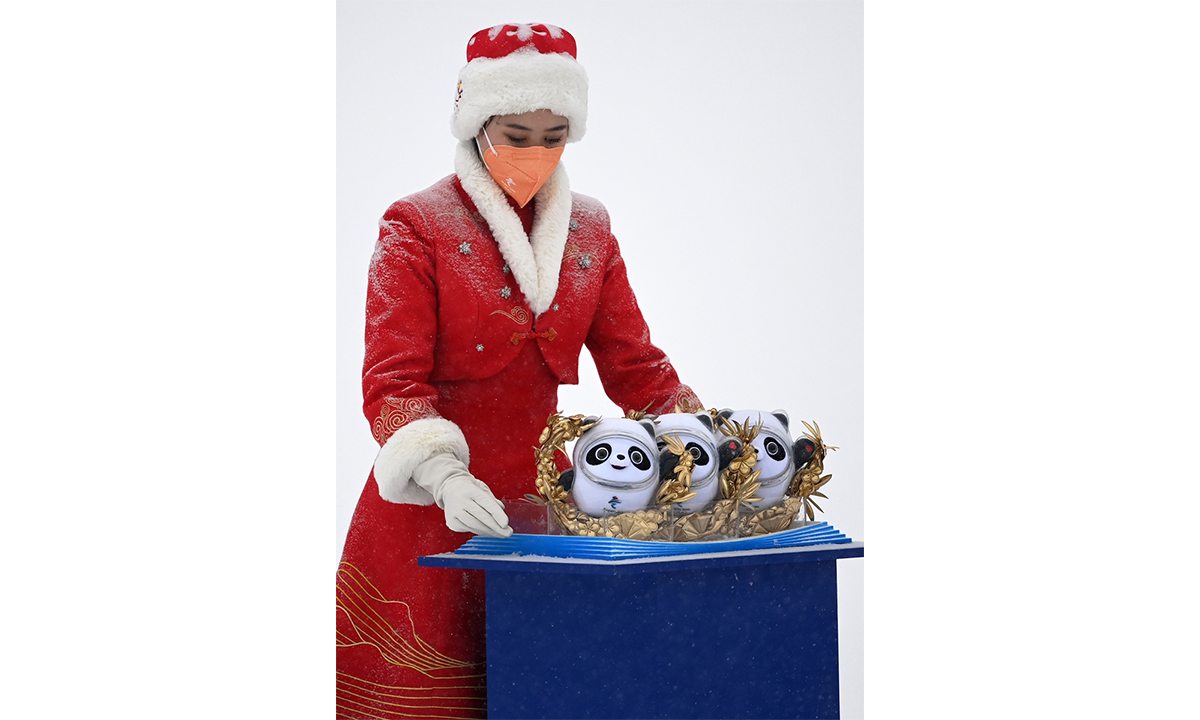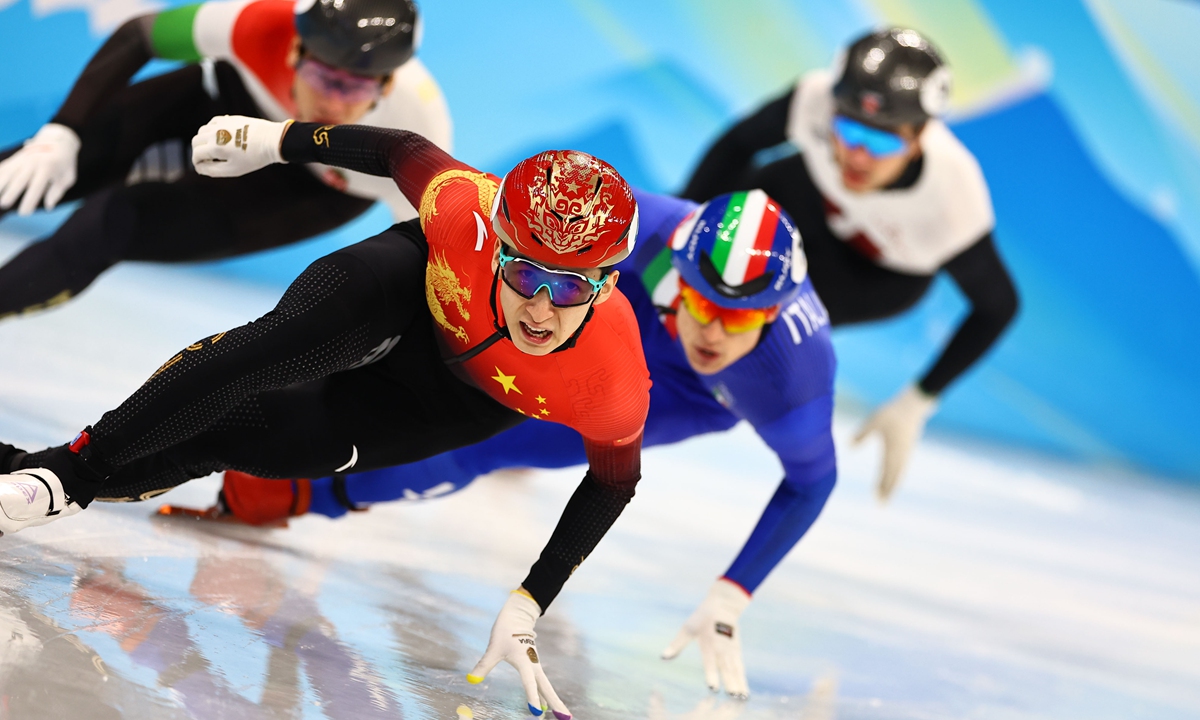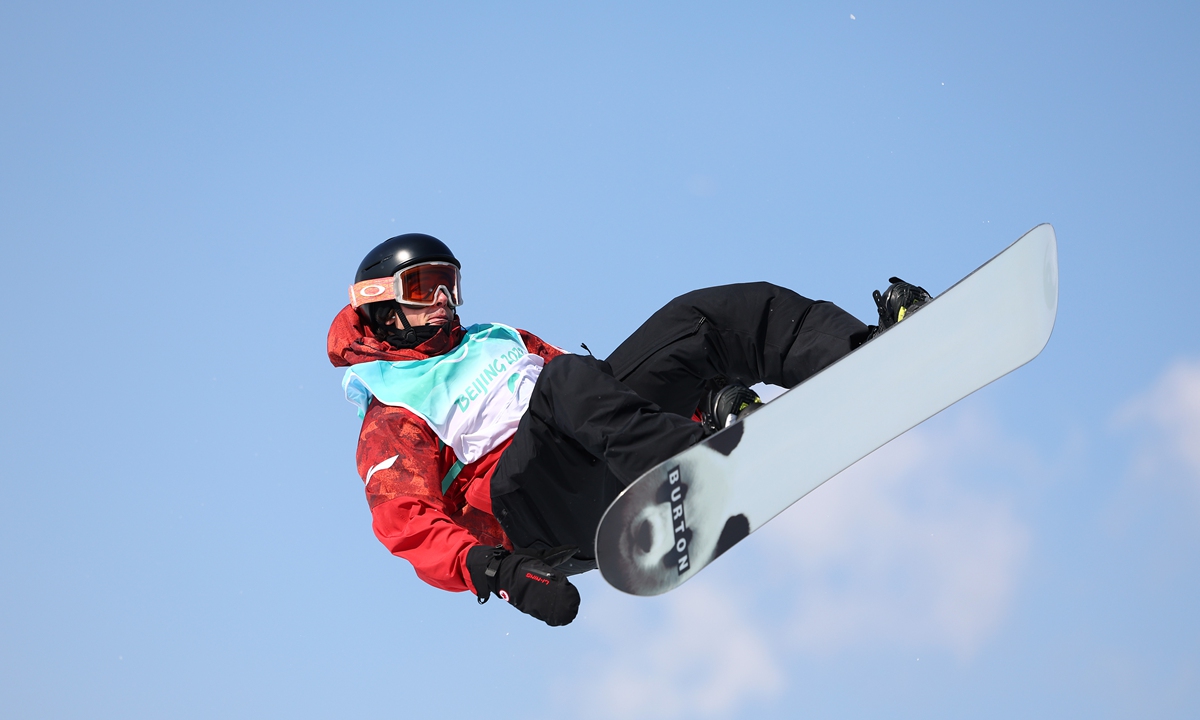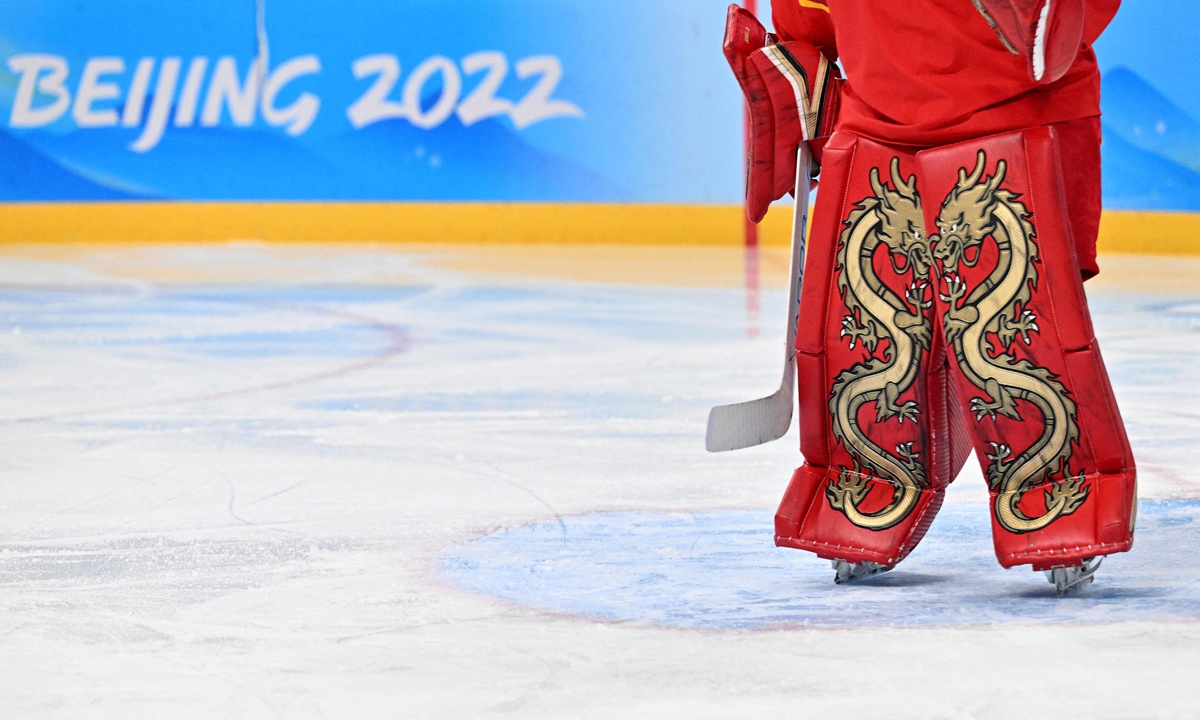
An awards ceremony attendant prepares the Beijing 2022 mascots Bing Dwen Dwen for medalists. Photo: VCG
From Olympic mascot Bing Dwen Dwen to Chinese dragons, traditional Chinese cultural elements have been a major trend at the Beijing 2022 Olympic Winter Games, igniting fanatical love among viewers and athletes from both China and abroad.
'The Great Wall' Many people watching from home have been impressed by Team China's Gu Ailing for her cool "flying over the eaves and walls" moves at the Genting Ski Resort, which boasts a "Snow Great Wall," during the women's freeski slopestyle competitions.
Located in Chongli district, Zhangjiakou in North China's Hebei Province, the Genting Ski Resort has grabbed people's attention for its slope obstacle skill track that incorporates the elements of the Great Wall, beacon towers and Chinese-styled roofs.
"Even if there is no sign that says 'Beijing 2022 Olympic Winter Games' on the track, you will know it is in China when seeing the striking image of the snow Great Wall remade on the track," Shu Wen, deputy director of the resort, told the Global Times.
The ups and downs of the six-segment track, which includes three sets of props and three sets of jumping platforms, is lined by a miniature Great Wall made from snow.
Shu explained that the creation drew inspiration from Shanhaiguan, one of the major passes in the Great Wall, in Hebei Province.
He mentioned that the resort was designed through the cooperation of more than 50 Chinese and foreign sculpting experts. In the three weeks before the competition, the Chinese and foreign teams worked together and finally presented the venue to the world in a perfect showcase.
Olympic debut for TCM
Besides the chic designs, the Beijing Games have also won the hearts of athletes from overseas when it comes to traditional Chinese medicine (TCM), including its two branches
zhen jiu (acupuncture) and
tui na (Chinese therapeutic massage). TCM made its Olympic debut at an experience hall at the Olympic Village.
Zhou Dajun, a TCM doctor based in South China's Guangdong Province, told the Global Times that the two branches date back thousands of years and that they can help athletes relieve sports injuries, insomnia, anxiety and other issues so they can better perform during the competition.
He pointed out that recognition of the benefits of TCM has been increasing around the world due to its effectiveness and the rise of Chinese culture.
Auspicious designAt the medal ceremonies, etiquette volunteers have captured audience attention with their clothing featuring propitious patterns of snow and clouds.
Zhang Xiaoyan, a professor at Shanghai Polytechnic University and expert in researching ancient Chinese clothing, told the Global Times that this is a traditional Chinese pattern that symbolized hopes for a "promotion" in ancient China.
She explained that clouds were an auspicious symbol that embodied ancient people's infinite expectations for Heaven.
Cloud symbols can be seen on pottery from the Neolithic period, and they were widely used in books made of silk, clothing and lacquerware from the Han Dynasty (206BC-AD220) to the Qing Dynasty (1644-1911).
Zhang also said one of her favorite Chinese elements at the Games is the red helmet worn by Chinese short track speed skater Wu Dajing, which is printed with the classic image of Monkey King to represent invincibility.

Chinese short track speed skater Wu Dajing's helmet with the image of Monkey King Photo: VCG
Meanwhile, his uniform sports a Chinese dragon, a symbolic image that has been widely used on many athletes' uniforms including that of talented skier Gu, who designed the golden Chinese dragon on the back of her black coat.
Gu said that the design refers to "a dragon among humans," in other words, an outstanding person.
The helmet worn by French athlete Mathieu Faivre during the Alpine Skiing event sported a combination of Chinese elements including the Great Wall, koi fish, a panda and a dragon. He once said that he wanted it to act as a greeting to Chinese viewers.
Canadian snowboarder Mark McMorris' snowboard featured a panda on each side as he competed during the Men's Snowboard Big Air final. He expressed his love for the animal and Bing Dwen Dwen in an interview, saying the mascot gave him a lot of "vitality."

Canadian snowboarder Mark McMorris performs a trick at Beijing 2022, with an image of the giant panda on his snowboard. Photo: VCG
Elegant and modern designs are the inheritance of traditional culture, and they have become a symbolic name card showing the confidence of the Chinese people," said Zhang.
"I think the traditional Chinese style element of this Olympic Games is no longer a deliberate display, but can be seen everywhere and spontaneously. We are no longer a follower of modern civilization, but can lead a trend in the world," Ao Luojia, an internet influencer and design director of a traditional Chinese clothing shop based in Southwest China's Chonging Municipality, told the Global Times.

Chinese women's ice hockey team goaltender Zhou Jiaying's leg pads featuring two Chinese dragons Photo: VCG







